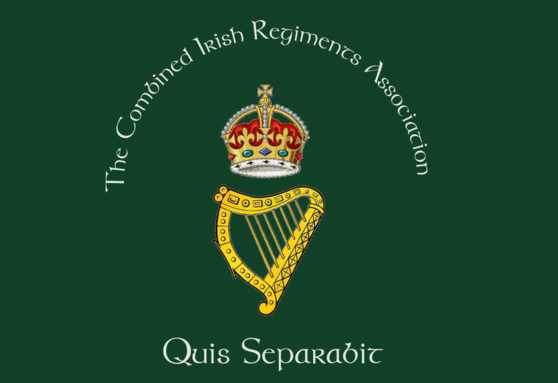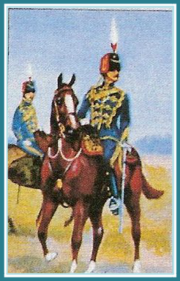
8TH KING'S ROYAL IRISH HUSSARS.
The Regiment was raised in 1693 as a dragoon unit from Protestants living in Ireland. This was only two years after the decisive Jacobite defeat at Aughrim and the new regiment remained in Ireland until 1704, when it was posted to Portugal and Spain. It remained there until its capture at Brihuega in 1710. It was soon involved in a prisoner exchange and returned to Ireland, where it temporarily disbanded from April 1714 until July 1715, before the First Jacobite Rebellion triggered its re-formation.
The Regiment fought against both Jacobite Rebellions, but otherwise remained on policing duties in Ireland from 1715 right up until 1794, when it was posted to the Low Countries. The Regiment was designated light dragoons in 1775 and gained the ‘King’s’ prefix two years later.
The French Revolutionary Wars saw the Regiment garrisoning the Cape of Good Hope from 1796 onwards and sending a detachment to join Abercrombie’s force in Egypt in 1801. That year also saw it sail to India, where it stayed for 22 years, fighting in the Maratha Wars as well as campaigning in Nepal and against Meer Khan.
In 1823, just after getting back to Britain, it was re-named and re-equipped as hussars, keeping order in England and Ireland for the next 30 years. It fought against the Russians at Silistra on the Danube, en route to the main theatre of the Crimean War (1854-56). There, it served at the Alma and the infamous Charge of the Light Brigade. The charge was led by the Earl of Cardigan, who had been an officer in the 8th Hussars from 1824 to 1830.
Only 154 of the Regiment returned from the Crimea in 1856, but they were in Ireland for less than a year before being dispatched to deal with the Indian Mutiny (1857-59). One of the Regiment’s squadrons fought at Gwalior, where four of its members won the Victoria Cross and a fifth killed the Rani of Jhansi.
It then formed part of India’s garrison until 1864 and again from 1878 to 1889, guarding lines of communication between Kabul and Peshawar during the Second Afghan War (1878-80) and fighting against the Shinwarrie tribe. One of its officers during this period was John French, later famous for his generalship during the First World War. It spent the rest of the 19th century in England and Ireland, from where it sailed to the Boer War in 1900. Another term in India followed from 1909 to 1914.
It spent the First World War on the Western Front and made its last mounted charge in 1917.
Read more about the actions of the 8th King's Royal Irish Hussars during the First World War.
When war finished, in 1919, it was posted to the new nation of Iraq and then to Germany in 1926, before moving to Egypt from 1933 to 1939.
Except for a period of peacekeeping in Palestine, it remained in Egypt until the outbreak of the Second World War, by which time it had switched to armoured cars, then to light tanks. Service in North Africa, Greece and Italy followed. The Regiment then returned to the United Kingdom to prepare for the invasion of Europe, landing two days after D-Day and ending the war near Hamburg, before joining the occupation force.
The Regiment’s final campaign was in Korea between 1950 and 1952, which included service on the Imjin River. In 1942 the Regiment had temporarily merged with The 4th Queen's Own Hussars and this amalgamation was enacted again in October 1958, this time permanently, to form the Queen's Own Royal Irish Hussars.
